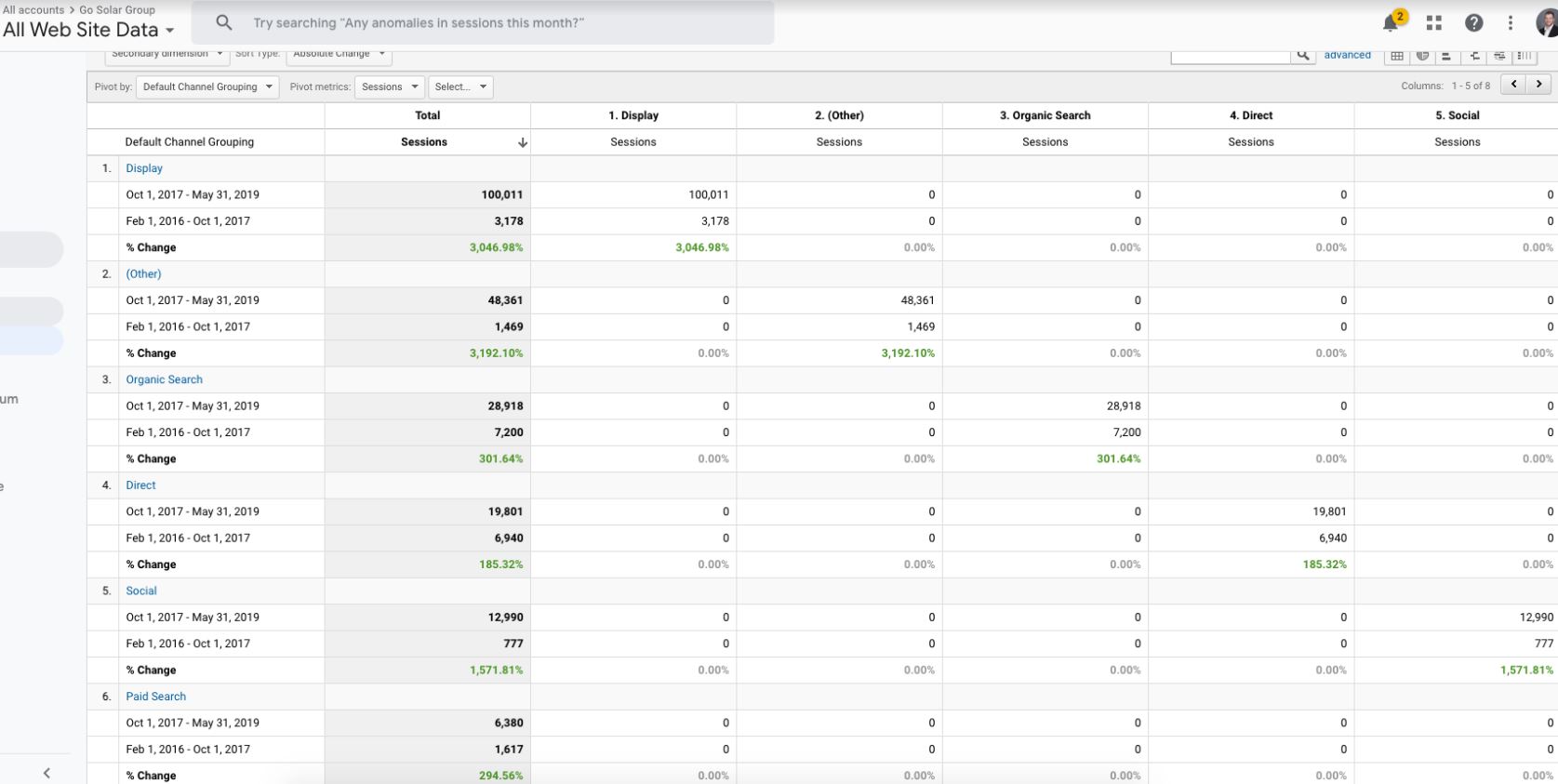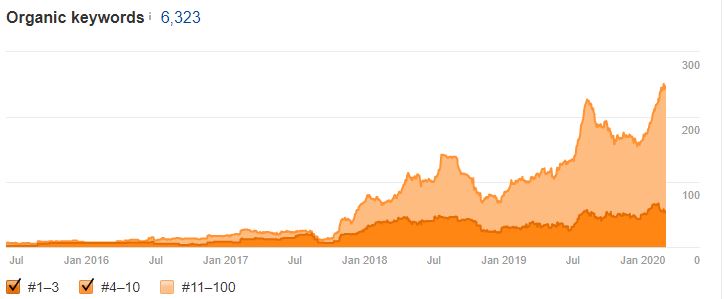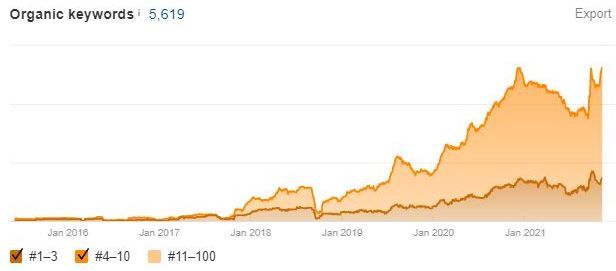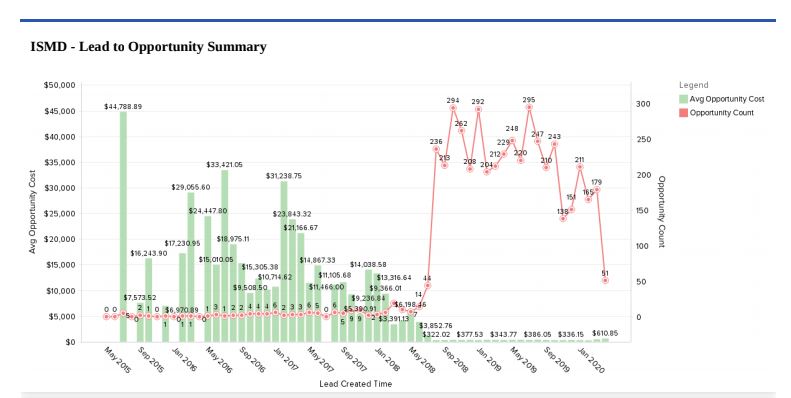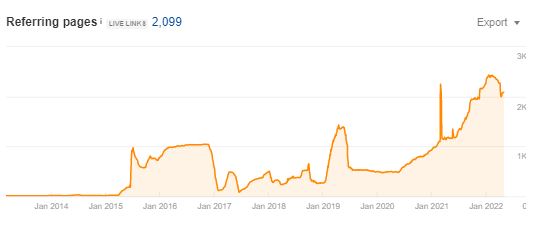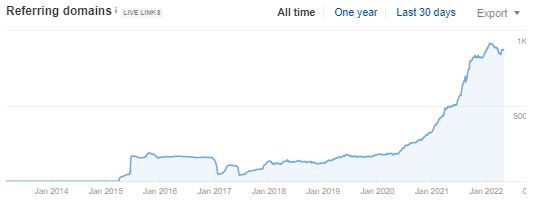The Copywriting Sales Cylinder
A Farewell to Customer Attrition in Standard Sales Funnels via Copywriting Techniques
The Scope of the Copywriting Sales Cylinder
Do you remember when you generated your very first lead with a piece of copy you had written? I sure did. When it happened, I shot a quick chat over to the CEO of the company for whom I worked, letting him know the campaign that generated the lead was up and running successfully.
His response? “Great, but I am more anxious to see it generate customers.”
Ouch.
This interaction, as deflating to my ego as it was, helped me enormously in understanding the true duty of all copy-based content marketers – to generate leads with great writing that don’t just generate interest, but are also easy for mid-funnel lead development teams and salespeople to convert and close. At that point, I vowed to write content that pulled more weight in the sales funnel than simply generating interest.
In doing so, I developed a method for sculpting a sales cylinder with great copywriting and communication techniques. This meant creating leads that would soar through the pipeline, with very little attrition. Click the button below to see the successful performance track record our talent has used with the copywriting sales cylinder method.
A copywriting sales funnel implies that the leads generated from the copy drop off as the sales cycle progresses, whereas a copywriting sales cylinder implies very little (if any attrition) in that same pipeline.
This results in a lower cost per sale, greater motivation from lead development teams and salespeople to work the leads generated and, best of all, greater impact as a copywriter. The approach for creating the copywriting sales cylinder is different – it means tracking data and customer behavior at every stage of the buyer’s journey so thoroughly that you keep the width of your copywriting sales funnel as wide as possible.
1. Use Comparative Language. Avoid Superlative Language.
Many brands aren’t aware of it, but their messaging in mid-funnel lead development and in their content and copywriting (sometimes even something as center-stage as their taglines) use clichés and empty phrases to describe their products and services. Some common examples are “high-quality,” “best,” and “state-of-the-art.” These assertions carry no weight.
Why? Because:
A) You are paid to promote your product or service and the consumer knows this.
As Ogilvy said, “The consumer is not a moron. She’s your wife.”
B) So many companies make these claims that none can stake claim to them.
C) Many ‘quality’ identifiers for products and services are, while determined by the industry pioneer, subjective. Take Levi’s jeans for example. Founded in 1871, Levi Strauss convinced the public that good jeans were denim and hewn from durable material. While there may have been good reasons for this determinant of quality in the 19th century since a far greater percentage of Americans worked in agricultural and blue collar jobs, Levi’s are still purchased today, and many people buy them because of their “quality,” despite the asynchronous purpose the jeans’ material was chosen for, and the lavish lifestyle Americans live. To see an example of this, and one of our written branding presentations, click the button below.
2. Great Copy Comes with 1 Big, Consistent Change. Not Hundreds or Thousands.
The rewards of great marketing are usually the result of 1 big change or program, not doing all the little small things correctly. This always takes time as well, so your coworkers and managers will have to be patient.
While we want financial types to love us as marketers, it’s important to not get lost in an accounting department’s emphasis on short-term planning, which can have long-term negative implications. This is the Pareto Principle distilled into marketing form: 80% of the outputs come from 20% of the inputs.
People who leverage this concept are rarely harder-working than others, but they know a great plan when they see it, including the route to execution. One example of how we leveraged this principle at Go Solar Group was to create unique solar generators sweepstakes for website visitors who opted into the giveaway on one of the campaign’s 3 market-specific pages.
After only 2 weeks of running, it had generated 3 sales, 25 opportunities, more than 200 leads at a cost per close nearly 1,200% beneath our average for that metric.
Despite the success, it was just one simple idea that generated enthusiasm for and interest in solar power. However, it took time to set up and execute properly. We also had to plan for risks, which were covered in indemnifying legalese for the Official Rules of the campaign (which I had a blast writing…). You’d be amazed just how much legal protection you must have to give something away for free!
3. Write Copy About Who Your Brand Is. Not What You’d Like it to Be.
Admit your negatives to a prospect in your copywriting and content, and humanize the brand into someone your target customer wouldn’t mind having a drink with after work. They’ll be more likely to believe the strengths that you mention. Just make sure whatever negative you provide is surmountable, and could be overcome provided the prospect has an objection to it.
4. Begin Writing Copy with the End Result of the Sale in Mind.
One of the ways I see marketers lose focus on the sale is by getting too wrapped up in creative. Creativity is important but must work in a smooth interplay with other factors like positioning and data-driven decision making. When it comes to results, creative ideas are hogwash compared to style and structure – which are the essence of great lead-generating copywriting and campaigns.
Many creatives get too wrapped up in making their ideas “creative enough” and lose clarity, simplicity, and customer-centricity in the thick of thin things. This is something I see many creatives in advertising agencies focus on too much. While it’s not quite as bad in the actual industry as it is portrayed in the show MadMen, it can be comparable in the worst cases.
Building a copywriting sales cylinder is all about taking the steps necessary to ensure prospects develop perceptions about your brand that drive purchase behavior. What most organizations and managers forget, however, is that the perception of employees working to sell the product is almost as important as the customer perception of the product.
And it’s not just about the workers’ perceptions of the product: It’s about their perceptions of the company employing them and its managers. Nodding your head and sitting on the edge of a chair or following some persuasion specialist’s strategy of “mirroring the body language of the employee who’s speaking,” is not enough. They’ll sense you don’t care if you don’t care. And customers will be able to sense this as well. “Leadership and Self Deception,” a brilliant book on this subject published by the Arbinger Institute covers this concept extensively.
5. Your Copy Must Be Written to Give Before It’s Worthy to Receive
You will fail as a copywriter if you do not have the empathy to treat your prospects as people and learn about their experiences engaging with your brand. You can’t generate a lot of qualified leads without giving the prospect a great initial experience.
Great marketing is usually the engine of every successfully built copywriting copywriting sales cylinder, and this requires providing value up-front and throughout the entire stage of the buyer’s journey. In today’s digital climate, nobody can rank #1 organically in search results overnight. As Thomas Edison said, the opportunity is ignored by most people because it is “Dressed in overalls and looks like hard work.”
6. Always be Testing (ABT)
The sales guys have their own adage popularized by Alec Baldwin in Glengarry Glen Ross – “ABC…Always. Be. Closing.” So I’ve taken the liberty to develop the marketer’s version: Always be Testing. ABT. With all the opportunities for automation and digital testing provided in the modern marketing world, there is no excuse to not test everything. Just be sure to isolate the variables most important to you before drawing conclusions about your findings.
If you’re not sure where to start, begin with an email, and test a call-to-action. Make sure you have an email automation platform with embedded metrics to help you evaluate results, such as Marketo, Lyris, or HubSpot. Send a test email to a small portion of your intended audience with a statistically significant sample size (5%). Make sure the recipients are all subsections of your target audience (e.g., if you work in healthcare, make sure the recipients share one common trait like the type of doctor, gender, or age.
Divide that sample size into two separate groups. Send one email with a blue call-to-action and one with a red call-to-action (brand guidelines permitting, but any colors will do for a test). Be sure to send both emails on the same day of the week and time of day, and evaluate performance at the same time as well (at least 3-4 days after sending). If one call-to-action color got more clicks, use that color for all future emails sent to that same demographic. This is just an example. You can test call scripts, subject lines, audiences, devices, and more.
Remember, you can’t adequately test anything without having the technology infrastructure needed to aggregate data about your copy. Sales qualified opportunities are where I see companies make some mistakes with attribution. For example, I once discovered many opportunities in a CRM were labeled as “Rescheduled,” when the correct disposition should have been “Needs Rescheduling.” Since the Inside Sales team in question doesn’t get paid for appointments that were not successfully rescheduled, some employees thought the team was labeling them incorrectly to get more from their paychecks than they had actually earned.
However, upon closer investigation, they clumped the “Needs Rescheduling” and “Rescheduled” opportunities under the “Rescheduled” Opportunity disposition because we did not have a “Needs Rescheduling” option. Essentially, the team wasn’t trying to rob the company, but rather confused about the lack of opportunity dispositions made available to them. This didn’t happen because the employees didn’t care. Rather, it happened because the company is entrepreneurially managed, fast-growing, and working on defining its processes before striving to enforce them. You may be surprised to find that many of your sales qualified opportunities are stuck in limbo, forgotten, or under-prioritized as well. If someone calls and says they need to reschedule a meeting with a salesperson at your company, how are you going to ensure that qualified opportunity gets back on that salesperson’s calendar?
Some marketers may look at these options as a bit too digital-intensive. However, digital is essential to forming your copywriting copywriting sales cylinder; once it’s up and running and your website is ranking for keywords (which I’ll detail below) it’ll do normal laborers’ work for you, and at a lower price than anybody you could hire. If you think your prospects aren’t online, you’re likely wrong, and even if they aren’t, you can bring them there with the right targeting.
7. If Writing Online, Craft Copy with Built-in Attribution
Without attribution modeling, you may have campaigns that work, but you will not be able to trace where they’re coming from (especially if you’re like most companies and send all digital campaigns to your website). Attribution modeling is a complicated way of saying something pretty simple – attribution modeling is “the way you know where your leads come from, how they’ve been worked, who converts them, and who sells them.”
It is a complex topic, but for the purposes of this post, it suffices to say that all you need to know is to make sure that you have “master” fields in your CRM for all your prospects, and ways of categorizing data sets by leads source and where they come from. You don’t have to be an expert in data modeling to do this – simply punch in the fields for the campaign, call to action, or line of copy that fit your established lead generation information architecture. The best and easiest tool for this is Google’s Campaign URL Builder.
8. Contour Your Copy to the Customer’s Stage in the Buying Process
If you’re a copywriter, knowing the stage in which a lead is before it’s become a sale is just as important as what you write when attempting to communicate with a lead. This is when the process of ‘nurturing leads’ with your copy comes into play.
This concept is crucial for things like abandoned cart emails, newsletters, or any written attempt to target customers ‘stuck’ in your sales cylinder, including ones likely to generate repeat business with the right nudge. The longer your sales cycle and the more expensive your product or service, the more essential lead nourishment is to your copywriting copywriting sales cylinder.
Consumers are overwhelmed with options, and they will give their money to the brands who educate them and take care of them once they’ve made it clear interest has been established. Email is the best way to do this, especially for longer sales cycles. Email marketing platforms help nurture leads and provide alerts on campaigns or special offers. The most common problem I see with many companies is they either over-email or under-email their prospects. SMS notifications are also helpful depending on your demographic.
The best part about nourishment campaigns is that even the “lost cause” leads can be leveraged to generate revenue. For example, at Go Solar Group, we created a Sun Split Referral Program. Our initial customer referral program had already been established, but we still needed a way to generate leads from people who got on the phone with us and decided, for whatever reason, that they were no longer interested. The Sun Split program accomplished this: It awards $500 to anybody who sends us an interested and eligible lead who completes a solar panel installation with us in one of our existing 3 markets. No matter what company or industry you work in, you can create a similar program. Just be sure to work with accounting to make sure the checks are actually sent! It’s one thing to waste money and time spent copywriting on generating leads that do not convert. It’s another thing to keep generating them.
As a lead and especially in the era of permission marketing, your potential customer has now realized they may very well have received all the objective info about you that they can and that the road to “objectivity” in the rest of their buyer’s journey is left up to mid-funnel lead developers and salespeople. The consumer will assume, implicitly and as the subtext of every conversation, that you are biased. And they’re right; after all, the potential customer is more frequently right than even the customer!
9. Rely on Lead Development and Sales Staff for Actionable ‘Anecdata’
This is where the copy begins to take a back stage, and you use your knowledge of words and language about your target customers to help the closers seal the deal. Learning sales is partially the science of persuasive language. Practicing it is a manifestation of the same thing, except as an art. One of the top salespeople at a company for whom I used to work knows the same things about sales as I do, but we learned them in very different contexts.
An extroverted people person, he learned what he knows about selling through practice, experience, trial and error. With me being an introverted word wonk, I learned these same things primarily through books on selling, which helped me parlay those concepts into copywriting lead generation tactics.
From Jeffery Gitomer’s “Sales Bible” to Bob Cialdini’s “Influence: The Psychology of Persuasion,” I devoured books on selling concepts, all of which had a scientific and rigorously tested foundation. However, I will never be able to outsell a top salesman, because they embody energy designed for selling that I simply do not have, nor could I conjure up or feign this energy out of thin air, and especially not on-the-fly.
10. Great Copy Shows That You Care About Your Customers, and Have the Humility to Learn About Them
And no, we don’t mean that facetiously, or in the sense that most customer care centers do. You know, the ones who train their service teams to robotically say the same specious, halfhearted thing to placate you after you’ve been put on hold for an entire afternoon, or when you confront them at the service desk about pretending not to notice you while they check social media.
Despite all the strategic, technical, and complex concepts outlined above, there is one concept that will help marketers build copywriting sales cylinders out of their lackluster sales funnels more readily than knowledge, technology, and branding. It is simple to understand but difficult to practice, and the concept is to actually care. That’s right. The greatest copywriting marketing strategy of all time is to actually care about your customer.
This means honesty, follow-through, and above all, empathy. Treat your customers, leads, and prospects with respect, and they will give it back to you in one way, shape, or form. The humility and empathy that it takes to care about your customer beyond his or her ability to give you money is the mother of all marketing virtues: It is from this virtue that all learning and insight regarding how to better serve (and acquire) them via copywriting practices is derived.
Our Free 3-step Consultation Process
Request Your 1-Hour Consultation
Fill out any form on our site with your name, email, phone number, and the projects with which you'd like help.
We'll Ask Questions to Identify Needs
We don't ask questions to just appear as if we care about our prospective clients' needs. We ask questions to gather information that informs the best strategy and implementation of the written word for your brand.
Get a Proposal that Will Help You, With or Without Us
We'll create a customized report with strategies and steps built to help your brand, regardless of whether we win your business.
Copywriting Performance for a Word-based World



View the performance screenshots below and click the ‘WordWoven’s Results’ button beneath them to see what our writing and content expertise accomplishes. From 5-figure percentage increases in marketing KPIs like SEO-based website lead generation to sales-qualified opportunity increases from inbound marketing campaigns.

